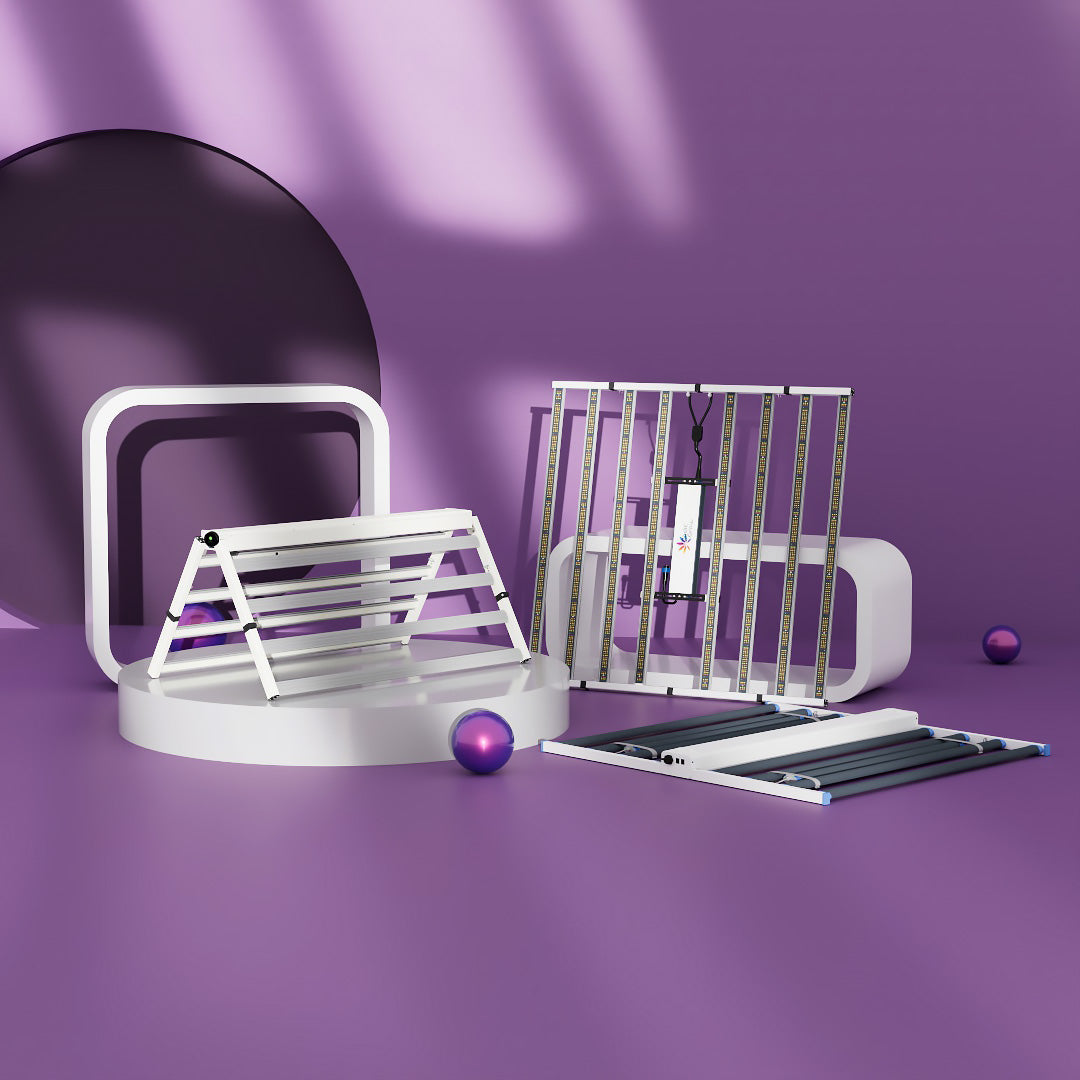GIẢM GIÁ 9% cho người đăng ký mới

Đèn trồng cây LED thương mại Medic Grow Fold-8 Full-Spectrum 760w được chứng nhận ETL & DLC cho 4X4/5X5
$369.99

Đèn trồng cây LED Medic Grow MINI SUN-2 có thể điều chỉnh độ sáng toàn phổ 150W-500W cho 2X2/3X3
$179.00

Đèn trồng cây LED toàn phổ 1000 Watt có thể điều chỉnh độ sáng thông minh Medic Grow Ez-8 cho diện tích trồng cây 5X5
$449.99

What Exactly is PPFD and Why Does It Matter for Plant Growth?
What Exactly is PPFD and Why Does It Matter for Plant Growth?
If you’ve ever looked into grow lights for vertical farming, greenhouses, or indoor cultivation, you’ve probably seen the term PPFD thrown around. But what does it really mean, and why is it often more important than just looking at watts or lumens? Let’s break it down.

🌱 1. From Light Bulbs to Photosynthesis: Why Lumens Aren’t Enough
-
Lumens measure how bright a light looks to human eyes.
-
Plants, however, don’t “see” light like we do—they use photosynthetically active radiation (PAR), light in the 400–700 nm range, for photosynthesis.
-
This is where PPF and PPFD come in.
📏 2. PPF vs PPFD — What’s the Difference?
-
PPF (Photosynthetic Photon Flux)
Measures the total number of PAR photons emitted by a light source per second, in micromoles per second (μmol/s).
Think of it as the “total amount of usable light” a fixture produces. -
PPFD (Photosynthetic Photon Flux Density)
Measures the number of PAR photons hitting a specific area per second, in micromoles per square meter per second (μmol/m²·s).
This tells you how much usable light your plants actually receive in a given spot.
💡 Key point:
PPF tells you how powerful a light source is.
PPFD tells you how much of that light actually reaches the plant canopy.
🎯 3. Why PPFD Is Crucial for Plant Growth
Plants have optimal PPFD ranges for different growth stages:
-
Seedlings: 100–300 μmol/m²·s
-
Leafy greens: 200–400 μmol/m²·s
-
Fruiting crops (e.g., tomatoes, peppers): 400–800 μmol/m²·s
-
Light-demanding crops (e.g., cannabis): 800–1200 μmol/m²·s
Too low → plants grow slowly and become weak.
Too high → plants can get light stress or photoinhibition.
🗺 4. Don’t Forget Light Distribution
Two lights with the same PPF can give very different PPFD readings across your grow area.
A good grow light should not only have high PPF, but also uniform PPFD distribution to avoid “hot spots” and shaded corners.
📊 5. How to Use This in Practice
-
When shopping for grow lights, check both PPF and PPFD values.
-
Compare PPFD maps from manufacturers to see how light spreads in your grow space.
-
Adjust distance and layout to match your target crop’s PPFD needs.
📌 Takeaway
Think of PPF as the “total amount of food” your lamp produces, and PPFD as the “amount of food your plants actually eat.”
Only when the two work together—high enough PPF with even, crop-appropriate PPFD—will your plants thrive.
Sản phẩm nổi bật


Đèn trồng cây LED thương mại Medic Grow Fold-8 Full-Spectrum 760w được chứng nhận ETL & DLC cho 4X4/5X5
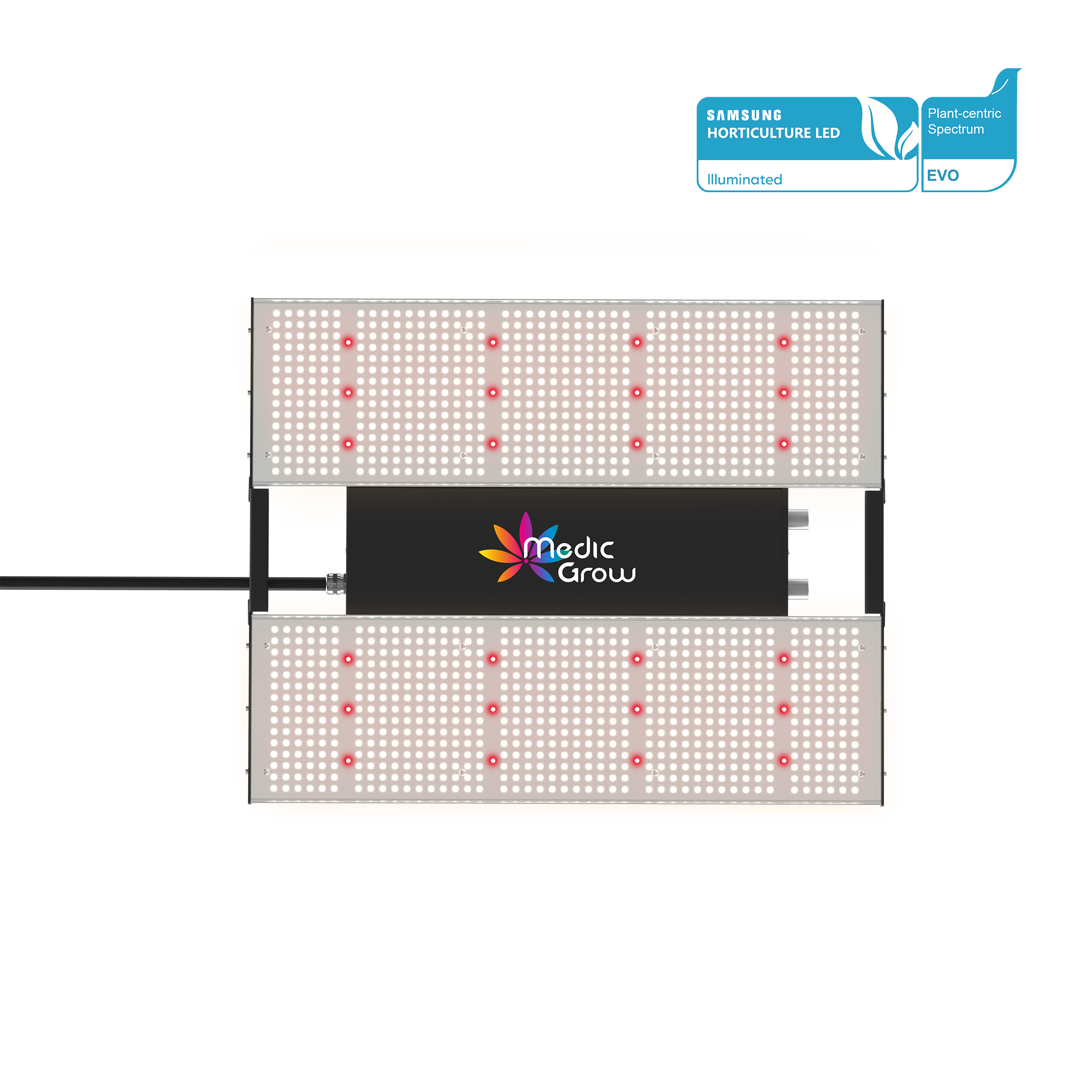
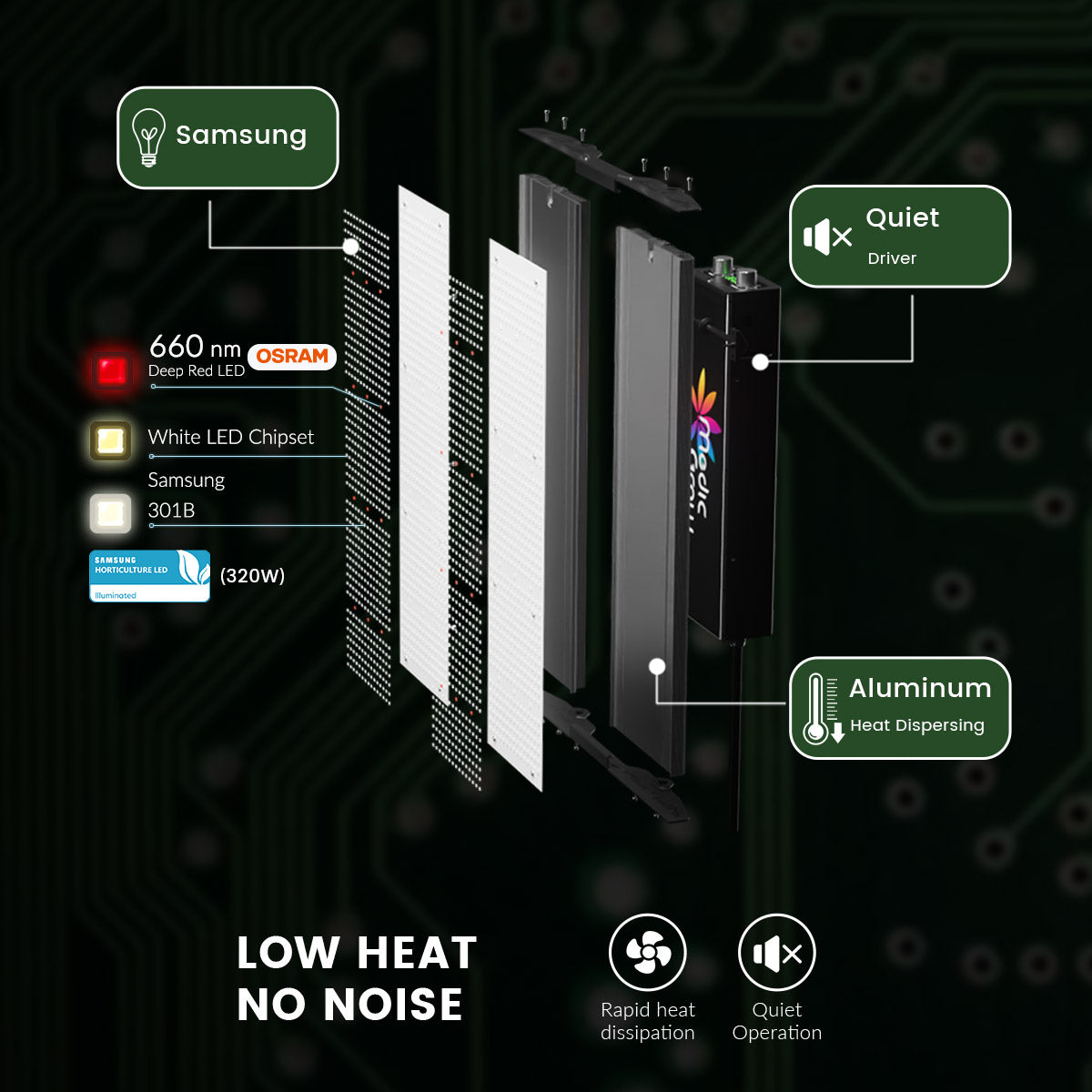
Đèn trồng cây LED Medic Grow MINI SUN-2 có thể điều chỉnh độ sáng toàn phổ 150W-500W cho 2X2/3X3


Đèn trồng cây LED toàn phổ 1000 Watt có thể điều chỉnh độ sáng thông minh Medic Grow Ez-8 cho diện tích trồng cây 5X5
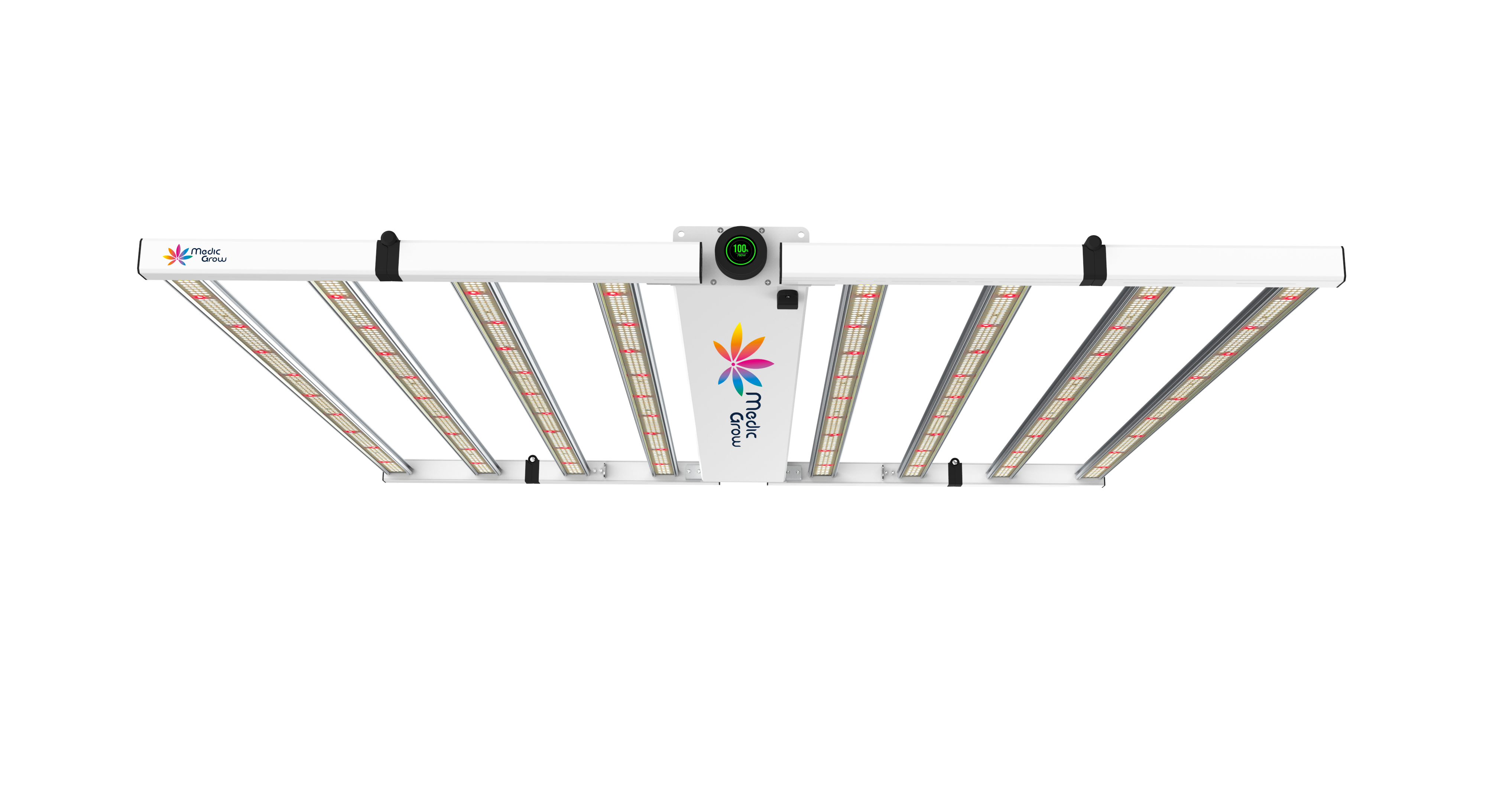
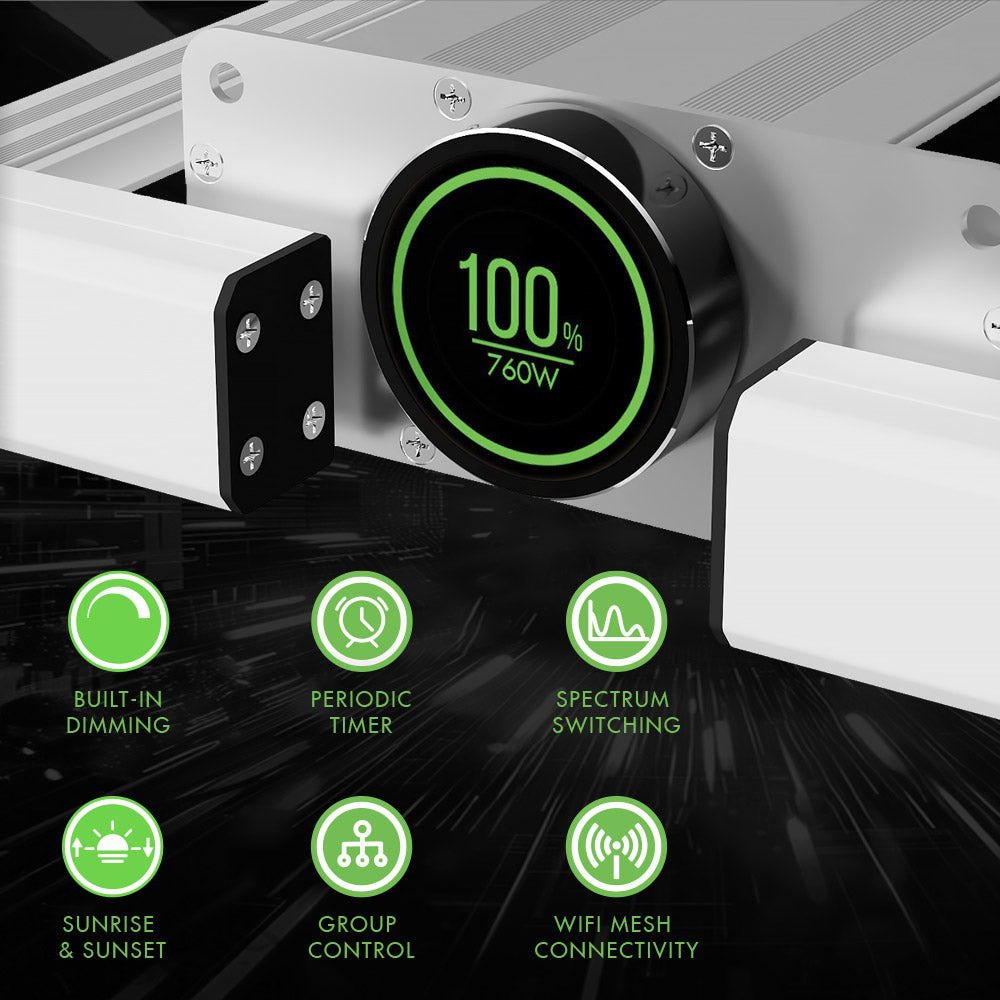
Đèn trồng cây LED quang phổ thông minh có thể điều chỉnh Medic Grow Neo-780/1000 780/1000w cho rau và hoa


Đèn trồng cây LED Medic Grow Smart-8 Full Spectrum có thể điều chỉnh độ sáng 760W có hẹn giờ - Đèn năng suất cao cho lều 5x5


Đèn trồng cây LED Medic Grow Venus Full Spectrum 200W tiết kiệm chi phí cho người mới bắt đầu và người trồng thực vật: 2X4FT


Đèn trồng cây LED quang phổ đầy đủ Medic Grow Fold-6 660W tiết kiệm chi phí - Đèn trong nhà 4x4 năng suất cao
Bài đăng trên blog

Medic LED Plant Grow Lights: Leading the way in horticultural lighting standards.

🌱 Are You Really Choosing the Right Plant Grow Light?

- led grow light
💡 Top + Bottom Grow Lights: The Future of Precision Cultivation
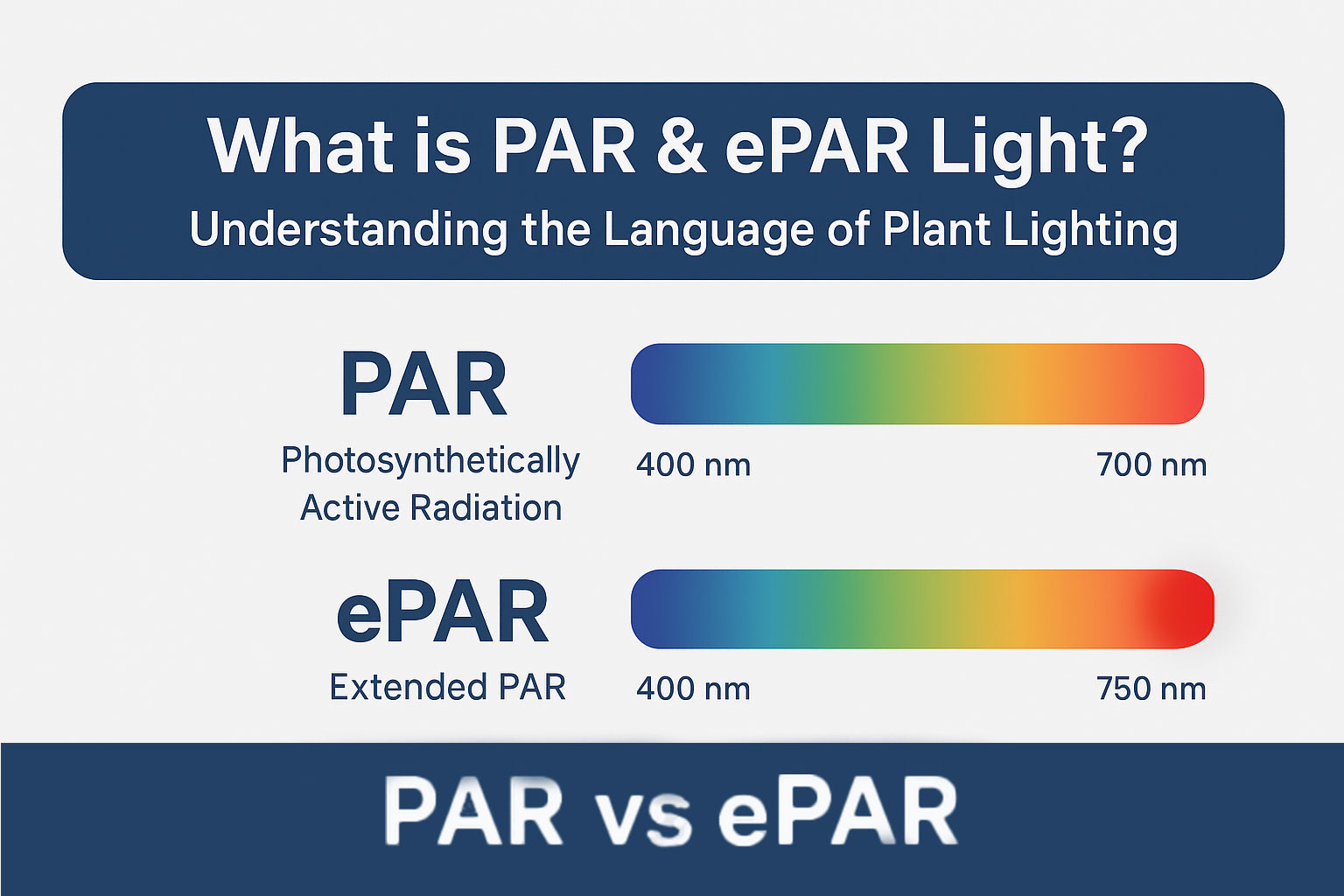
- hang grow light
🌿 What is PAR & ePAR Light? Understanding the Language of Plant Lighting
Hãy liên hệ với chúng tôi nếu bạn có bất kỳ ý tưởng nào!
- Chọn một lựa chọn dẫn đến làm mới toàn bộ trang.
!










